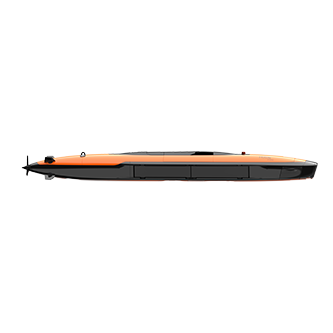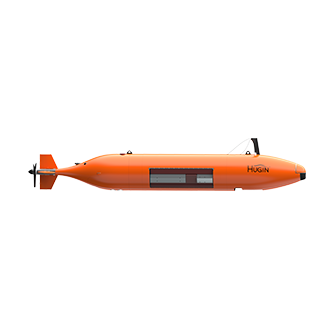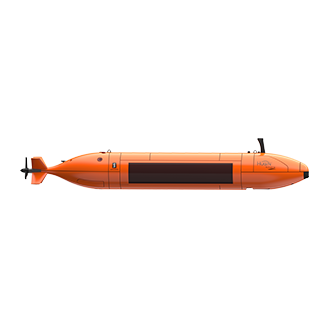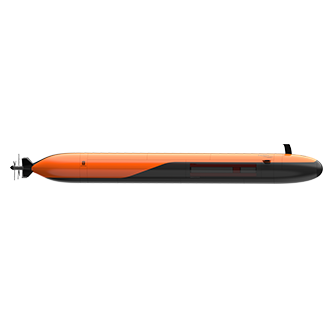
HISAS
Synthetic Aperture Sonar
Synthetic aperture sonar (SAS) is a form of sonar in which sophisticated post-processing of sonar data is used to produce a very narrow effective beam. It can only be used by moving instruments over relatively immobile targets, but it has seen wide applications in remote sensing and mapping.
Much higher resolution
Synthetic aperture sonars combine a number of acoustic pings to form an image with much higher resolution than conventional sonars, typically 10 times higher. HISAS is a wideband SAS sonar with frequency range of 70-100kHz, capable of producing ultra high resolution acoustic images as well as co-registered bathymetry. The sonar is tightly integrated with the INS navigation and motion sensing platform of the HUGIN AUV, and makes use of modern signal processing such as DPCA (Displaced Phase Centre Analysis) to process the raw data into images.
4 cm resolution
The synthetic aperture sonar prototype has recently been tested with success at sea outside Horten, Norway, with signal processing done by Norwegian Defence Research Establishment (FFI). The image above is from this test and shows a sunken wreck standing upright on the bottom. It has a resolution of about 4 cm both along track and across, each acoustic beam being processed from 40 consecutive pings. If the reproduction of the image is good, one can observe details such as the wire running from the bow to the top of the mast.
Basic concepts
The azimuth (along-track) resolution of a sonar can be computed as the ratio between the acoustic wavelength and the length of the array. For typical side scan sonars, this ratio is of the order 1:60-1:400 (meaning a resolution of 1 m at 60 and 400 m range, respectively). A longer array will increase this ratio, but fitting such a long array is not always possible or practical on most underwater vehicles. Operation at a higher frequency will increase the ratio, but will at the same time limit the achievable range due to higher absorption. The Synthetic Aperture Sonar principle overcomes these limitations by utilising data from several consecutive pings to synthesize a longer sonar array. A fundamental limitation of SAS systems is that the platform cannot travel further than half the length of the receive array per ping interval (which in turn determines the range). For SAS systems, the maximum range is proportional to the receive array length, and inversely proportional to the platform speed. The theoretical azimuth resolution in SAS is half the length of each element in the receive array, at all ranges. In general, this resolution is not practically achievable, and the practical resolution will be 1.5 – 2 times lower. The range resolution is, as in regular side scan sonars, a function of the bandwidth.
Reverberation suppression
The multi-element transmit array and the programmable transmit waveform generator allows both beam direction and beam coverage to be varied to reduce influence of seabed and sea surface reverberation. Waveform, pulse length and transmit power are fully programmable.
Multi-aspect imaging
The small (in wavelengths) element size gives this sensor a wide field of view, facilitating the use of multi-aspect imaging. The principle is illustrated in the illustration below. In practice, the operator can view a continuous "movie" of an object seen from different aspect angles. This feature effectively adds another dimension to the data set, and greatly increases the probability of both manual and computerized classification of mine-like objects in cluttered areas.
Bathymetry
HISAS 1030 has two full-length receive arrays on each side of the AUV. They are used to form two SAS images of the same scene with slightly different geometry. This adds considerable robustness to the system, but it also allows very high resolution interferometric processing from SAS data. The specification is for relative bathymetry resolution better than 50x50 cm to full range, but in practice the resolution may be considerably better which will allow 3D imaging of mines and mine-like objects.
High resolution velocity measurement
HISAS can optionally provide a highly accurate measurement of an AUV's displacement (or velocity) in all three dimensions. This measurement can be utilised by an aided inertial navigation system, and will significantly reduce position error growth when absolute position.
FOCUS Synthetic Aperture Sonar
Signal Processing Toolbox FOCUS is a complete SAS post-processing toolbox, delivered with HISAS 1030. The figure on the last page shows the main building blocks in FOCUS.
The output products can be divided into four categories:
- Navigation
- Rapid result - dynamically focused multibeam side scan images, low resolution bathymetry
- High resolution - streaming SAS imagery and relative bathymetry of configurable resolution
- Classification - very high resolution imagery, bathymetry and other advanced products.
The toolbox includes integrated SAS micronavigation and inertial navigation, time and wavenumber domain beamforming, phase gradient autofocus (PGA) and seafloor height estimation by cross-correlation and interferometry. Data is made available in standard file formats (XTF sonar files, Kongsberg .ALL bathymetry data, GeoTIFF mosaic, etc). Depending on the required processing speed, a range of hardware options are available. Typical processing speed is 2-5 times faster than real-time for high resolution SAS imagery. Solutions are available for integrating FOCUS with third party post-mission analysis and display software. Parts or all of the FOCUS processing can also be applied in real time inside the underwater vehicle at the expense of added volume, weight and power consumption.
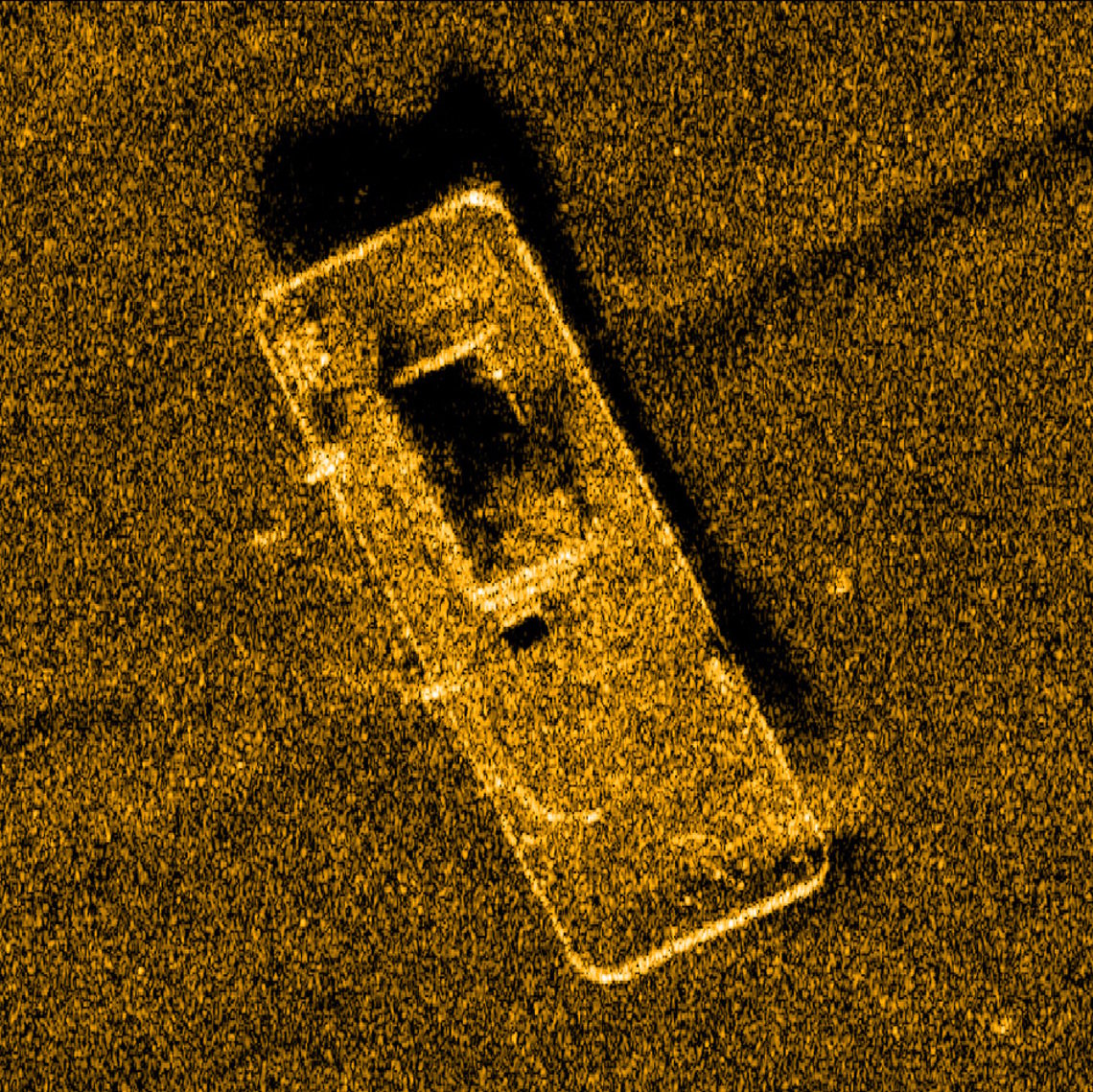
Get in touch!
In addition to our many offices around the world, our global dealership network enables distribution to more than 100 countries to meet customer needs at any location. Find your local dealership or Kongsberg Discovery office here.
Related products
We offer comprehensive after-sales assistance
-
24/7 Technical support
Our Technical Support team is readily available to provide global 24/7 support and can respond to resolve any issues at any time, wherever you are located in the world.
-
Training
We can provide detailed training on the use of our products to ensure your crew is equipped with the necessary operational competence to minimise technical risk and maximise return on your asset investment.
